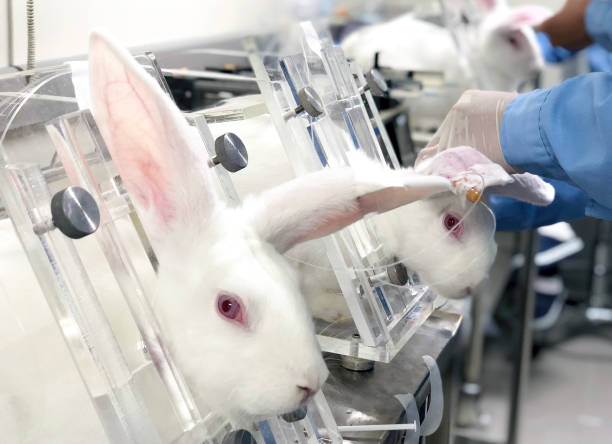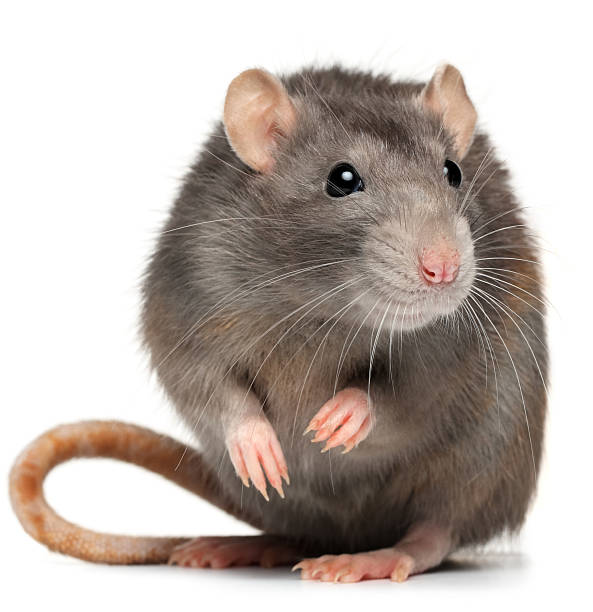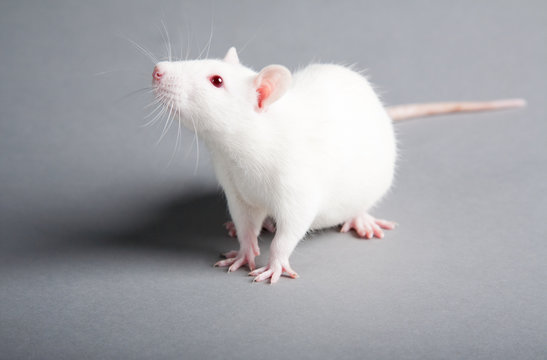The use of rabbits as experimental animals for research is highly important for understanding the fundamentals of biology and human health. Rabbits are often utilized as experimental models due to their significant physiological and genetic similarities with humans. A comprehensive understanding of the use of rabbits in research includes aspects such as organ structure, immune systems, and responses to diseases. Thus, rabbits become valuable tools for advancing knowledge about human diseases and therapeutic trials.
Understanding the relevance of using experimental rabbits in research involves a thorough analysis of the quality of this model as a biological representation. Rabbits are frequently employed in vaccine research, toxicology, and pharmacology due to their ability to provide relevant results corresponding to human body responses. Moreover, rabbits have a relatively fast reproductive cycle, enabling quick data acquisition in short-term studies. Through this comprehensive understanding, researchers can ensure that the use of rabbits in experiments contributes significantly to scientific knowledge and medical treatment development.

Types of Rabbits for Research
The types of rabbits used for research can vary depending on the research objectives and specific characteristics sought by researchers. Some commonly used rabbit types involve domestic rabbits and several species of wild rabbits. The European rabbit (Oryctolagus cuniculus) is the most commonly used rabbit species in biomedical, pharmacological, and toxicological research due to its physiological similarities with humans.
In addition to the European rabbit, some research also utilizes specific wild rabbits such as New Zealand rabbits or Himalayan rabbits depending on experimental needs. For example, Himalayan rabbits are often used in research related to genetics and the inheritance of specific traits. The selection of rabbit types depends heavily on the specific considerations of the research being conducted, such as the need for body size, reproductive rate, or specific physiological characteristics.
Advantages of Using Rabbits
The advantages of using rabbits as research animals lie in their physiological and genetic similarity to humans, thus providing research results that are more relevant and applicable in the context of human health. Rabbits have a sufficiently large body size, allowing for easier monitoring and sampling of organs, especially in pharmacological and toxicological studies. The rabbit’s immune system, similar to humans, is also a significant factor, enabling researchers to better understand immune responses to diseases and vaccines.
Additionally, rabbits have a relatively fast reproductive cycle, allowing for testing and observation in a shorter period. The ability of rabbits to produce a significant number of offspring in a short time is advantageous for genetic research and embryonic development studies. This factor provides flexibility in experimental design and accelerates discoveries in various biological fields. With these advantages, the use of rabbits in research continues to be a relevant and effective choice in understanding and developing solutions related to human health.
Disadvantages of Using Rabbits
Although rabbits are often used as research animals with many advantages, there are several disadvantages that need to be considered by researchers. Some of these disadvantages include:
1. Cost and Care
Caring for rabbits in a laboratory environment can require significant costs. From cage maintenance, specialized food, to health monitoring, all of these can impose a considerable financial burden on research laboratories.
2. Body Size
While the body size of rabbits provides advantages in sampling and observation, in some research, the relatively large body size can be a hindrance. Especially in studies that require model animals with smaller or specific body sizes.
3. Relevance to Humans
Despite physiological similarities between rabbits and humans, not all body responses and diseases that occur in rabbits can be directly applied to humans. Therefore, there are limitations in generalizing research results from rabbits to humans.
4. Ethology and Genetics
Some genetic studies may require more specific genetic variations or specific gene sets that are not always easily achieved using rabbits as a model.
5. Ethical Issues and Sustainability
The use of animals in research always raises ethical questions. Some individuals have ethical concerns regarding the treatment of experimental animals. Additionally, there are concerns regarding sustainability and the sustainable use of resources in the use of animal models.
Research Using Rabbits
One example of research utilizing rabbits as experimental animals is research involving vaccine development. Vaccines are a crucial method for disease prevention, and rabbits are often used in preclinical trials to test the efficacy and safety of vaccines before human trials. For instance, a study testing an influenza vaccine may involve rabbits as animal models.
This research may entail administering the influenza vaccine to rabbits and monitoring their immune responses to the virus. Rabbits can be used to understand the body’s immune response to vaccines, including antibody production and immune cell activity. The findings from this research can provide insights into the potential efficacy of the vaccine before human trials.
It is essential to remember that the use of rabbits or other experimental animals in research must always adhere to ethical guidelines and animal welfare, as well as comply with relevant regulations in the field.
Other Research Animals Besides Rabbits
In addition to rabbits, several other animals are commonly used in scientific research. Here are three animals that are generally used as experimental models:
1. Rats (Rattus norvegicus)

a. Advantages
Rats are the most commonly used animal models in biomedical research. They have a rapid reproductive cycle, low maintenance costs, and extensive genetic variations, allowing for genetic and toxicological research.
b. Utilization in Research
Rats are often used in research related to diseases such as cancer, diabetes, and neurological disorders.
c. Research Examples
One example of research involving rats is the study of the effects of obesity on metabolic health. In this research, rats may be fed a high-fat diet to induce obesity, and then the effects on insulin resistance and the development of metabolic diseases are studied.
 2. Mice (Mus musculus)
2. Mice (Mus musculus)
a. Advantages
Mice are a highly common animal model, primarily due to their genetic and physiological similarity to humans. Mice have a short reproductive cycle, and genetic manipulation of mice allows for the development of specific disease models.
b. Utilization in Research
Mice are used in various research studies, including studies on the immune system, genetics, and the development of gene therapy.
c. Research Examples
A study using mice may aim to understand the specific role of genes in cancer development. Mice that have been genetically modified to activate or deactivate specific genes can be used to evaluate their impact on tumor development.
3. Dog (Canis lupus familiaris):
a. Advantages
Dogs, although controversial in some ethical aspects, remain an important model, especially in preclinical research for drug development and therapy.
b. Utilization in Research
Dogs are often used in research requiring models that are more similar to humans, such as cardiovascular, orthopedic, and neurological studies.
c. Research Examples
One study with dogs may focus on the development of cardiologic therapy. For example, research evaluating the effects of stem cell therapy on heart tissue recovery after a heart attack in dogs as a model more similar to humans.
It is important to understand that the use of animals in research must always adhere to ethical guidelines and animal welfare, as well as comply with applicable regulations. It is also important to remember that the use of rabbits or other experimental animals in research must always adhere to ethical guidelines and animal welfare.
References :
- Handajani, Fitri. Metode Pemilihan dan Pembuatan Hewan Model Beberapa Penyakit Pada Penelitian Eksperimental. Zifatama Jawara, 2021.
- Mapara M, Thomas BS, Bhat KM. Rabbit as an animal model for experimental research. Dent Res J (Isfahan). 2012 Jan;9(1):111-8. doi: 10.4103/1735-3327.92960. PMID: 22363373; PMCID: PMC3283968.
- Mutia Rahmi, C. N., Hartady, T., & Lesmana, R. (2021). USE OF MICE AS EXPERIMENTAL ANIMALS IN LABORATORIES THAT REFER TO THE PRINCIPLES OF ANIMAL WELFARE: A LITERATURE REVIEW. Indonesia Medicus Veterinus, 10(1), 134–145.
- Siti Isrina Oktavia, Soesanto Mangkoewidjojo. Hewan laboratorium dalam penelitian biomedis. Gadjah Mada University Press, 2021.
- Wahyuwardani, S., Noor, S. M., & Bakrie, B. (2020). Animal Welfare Ethics in Research and Testing: Implementation and its Barrier. Indonesian Bulletin of Animal and Veterinary Sciences, 30(4), 211. https://doi.org/10.14334/wartazoa.v30i4.2529
- Paju, N., Yamlean, P. V., & Kojong, N. (2013). Uji Efektivitas Salep Ekstrak Daun Binahong (Anredera cordifolia (Ten.) Steenis) pada Kelinci (Oryctolagus cuniculus) yang Terinfeksi Bakteri Staphylococcus aureus. PHARMACON, 2(1).
- https://doi.org/10.35799/pha.2.2013.885Eko Marhaeniyanto, Sugeng Rusmiwari, Sri Susanti, PEMANFAATAN DAUN KELOR UNTUK MENINGKATKAN PRODUKSI TERNAK KELINCI NEW ZEALAND WHITE. Buana Sains. https://doi.org/10.33366/bs.v15i2.369


Leave a Reply